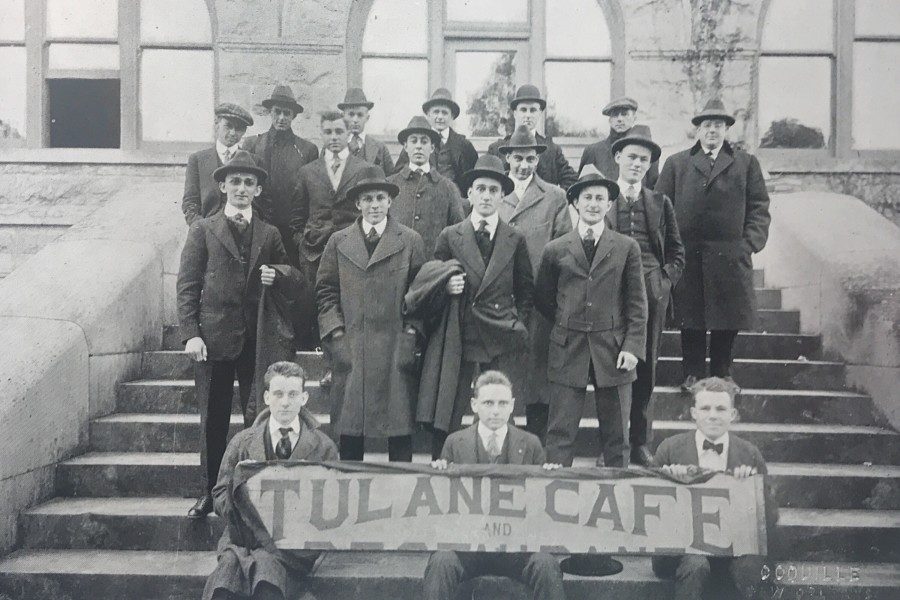Haute couture Tulane: student fashion through the decades
Trends in fashion have always been a reflection of the cultural values and events of a certain time period. Tulane University was founded in 1834, and its fashion has been constantly changing ever since.
Let’s start our journey through the changing fads of Tulane students’ fashion in 1916. The ‘Lost Generation,’ the generation of people coming of age around the time of World War I, consisted of young men wearing sack suits and long trench coats during the day. The graceful outfit was then topped with a signature hat, typical of the Jazz Age.
Just three years later, Tulane fashion undergoes changes again: 1919 consisted of a less elegant and preppy fashion, particularly for men. Following World War I, ex-soldiers were encouraged to return to college, and Tulane fashion depicted this change as men’s attire became more straightforward and fierce, abandoning the top hats and long coats often associated with Ivy fashion.
Jumping to the middle of the century, a radical change in formality can be seen through the student fashion of the 40s and 50s. At a time when Frank Sinatra was the latest obsession and jazz music was on the rise, a more relaxed style was seen for both young men and women. Girls, sporting shoulder-length, voluminous hairstyles, were often found wearing button-down sweaters or blouses with Peter Pan collars peeking out. It was also popular for many girls to wear neck scarves and tuck their tops into skirts that came down just past the knee. Boys’ casual clothes consisted of white button downs, rolled-cuff denim jeans and belts, reminiscent of the style worn by teens in the movie ‘Grease.’
The late 60s and early 70s saw a major development of the youth counterculture. This new interest in questioning traditional norms could not have gone unaccompanied by a change in fashion. Tulane students’ wardrobes were hippie-inspired and Bohemian. Loose clothing and long hair were representative of the carefree attitude of the time. A rise in feminist protests created a desire for women to abandon their traditional dress and opt for more ‘masculine’ clothes, such as long, bootcut pants and men’s-fit shirts.
In the 90s, America was happy and prospering, and it can be seen by the colorful and comfortable clothes college kids were wearing throughout the decade. The TV show “Friends” recently aired and many new fads were setting in: high ponytails, scrunchies, ugly Christmas sweaters and turtlenecks were all “in.”
Although the early 2000s was an introduction to the fashion we typically see today, remnants of the 90’s grunge style still had an influence over how Tulane students dressed. Denim was a critical obsession of the time, and in women’s clothing, light-wash and low-rise jeans were accompanied often by midriff. Men’s clothing was also linked heavily with denim, but sports-related clothing as casual wear, dark sunglasses and baseball caps also gained popularity.
Tulane has seen many fashion trends come and go, all contributing to the rich history and diversity of the university.
Your donation will support the student journalists of Tulane University. Your contribution will allow us to purchase equipment and cover our annual website hosting costs.

















Leave a Comment